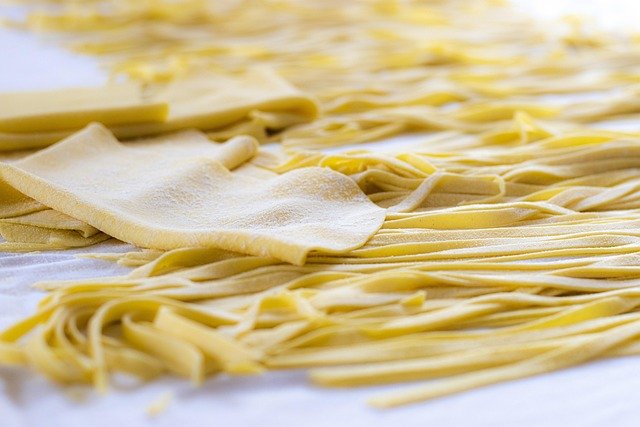Noodle Nirvana: The Art of Hand-Pulled Perfection
Slurp your way into a world of stretchy, chewy goodness as we dive into the mesmerizing realm of hand-pulled noodles. From ancient techniques to modern twists, this culinary craft is captivating food lovers worldwide. Get ready to explore the secrets behind these silky strands and discover why hand-pulled noodles are more than just a meal – they're an experience.

The art of hand-pulling noodles requires a delicate balance of ingredients and technique. Too much water, and the dough becomes sticky and unmanageable. Too little, and it won’t stretch properly. Master noodle makers often rely on touch and instinct, adjusting their recipe based on factors like humidity and flour type. It’s this intuitive understanding that transforms simple ingredients into noodle magic.
From Dough to Deliciousness
The journey from dough ball to noodle bowl is a spectacle to behold. After the initial mixing and resting period, the real show begins. Skilled noodle pullers start with a thick rope of dough, repeatedly stretching and folding it to create increasingly thinner strands. With each pull, the noodles double in length, often reaching impressive spans before being cut and cooked.
This process isn’t just about creating noodles; it’s a performance art. In many restaurants, noodle pulling is done in full view of diners, adding an element of theater to the meal. The rhythmic slapping of dough against the counter, the graceful arm movements, and the final dramatic pull create an immersive dining experience that engages all the senses.
Regional Variations and Flavor Profiles
Hand-pulled noodles aren’t a monolith; they come in various styles across different cultures. In China, where the technique is believed to have originated, you’ll find la mian – long, thin noodles often served in rich beef broth. Head to Central Asia, and you might encounter lagman, a heartier cousin featuring thicker noodles and a meat-vegetable topping.
Each region puts its own spin on the basic technique, resulting in unique flavor profiles and textures. Some incorporate alkaline agents for extra springiness, while others mix in vegetable juices for color and added nutrition. From the spicy, numbing heat of Sichuan-style noodles to the delicate simplicity of a Japanese soba, hand-pulled noodles adapt to local tastes while maintaining their artisanal essence.
The Health Angle: Nutrition in Every Strand
Beyond their irresistible texture and flavor, hand-pulled noodles offer some surprising nutritional benefits. The process of repeatedly stretching the dough alters its structure at a molecular level, potentially making it easier to digest than machine-made alternatives. Additionally, the lack of preservatives and artificial additives in fresh, hand-pulled noodles aligns with the growing demand for cleaner, more natural food options.
Many modern noodle artisans are experimenting with alternative flours like buckwheat, rice, or even ancient grains, catering to gluten-sensitive diners without sacrificing the hand-pulled technique. This innovation not only expands the accessibility of these noodles but also introduces new nutritional profiles, offering variety in both taste and health benefits.
Mastering the Pull: Tips for Home Cooks
While perfecting the art of hand-pulled noodles takes years of practice, adventurous home cooks can still try their hand at this rewarding craft. The key is to start simple and be patient with the learning process. Here are some tips to get you started on your noodle-pulling journey:
• Begin with a basic dough recipe: high-gluten flour, water, and a pinch of salt
• Allow ample resting time for the dough to develop elasticity
• Use oil on your hands and work surface to prevent sticking
• Start with thicker noodles and work your way to thinner strands as you improve
• Practice the stretching motion with a jump rope to build muscle memory
• Experiment with different flour blends to find your perfect texture
A Noodle Renaissance
As global culinary trends continue to evolve, hand-pulled noodles are experiencing a renaissance. Chefs around the world are incorporating these artisanal strands into fusion dishes, while social media buzzes with viral videos of master noodle pullers in action. This resurgence is not just about nostalgia; it’s a celebration of craftsmanship in an age of mass production.
The future of hand-pulled noodles looks bright, with innovative chefs pushing the boundaries of traditional techniques. Whether it’s incorporating unexpected ingredients or adapting the pulling process for modern kitchens, the art of hand-pulled noodles continues to captivate food enthusiasts. As we seek out authentic, handcrafted experiences in our meals, these noodles offer a tangible connection to culinary heritage and the joy of skillfully prepared food.






